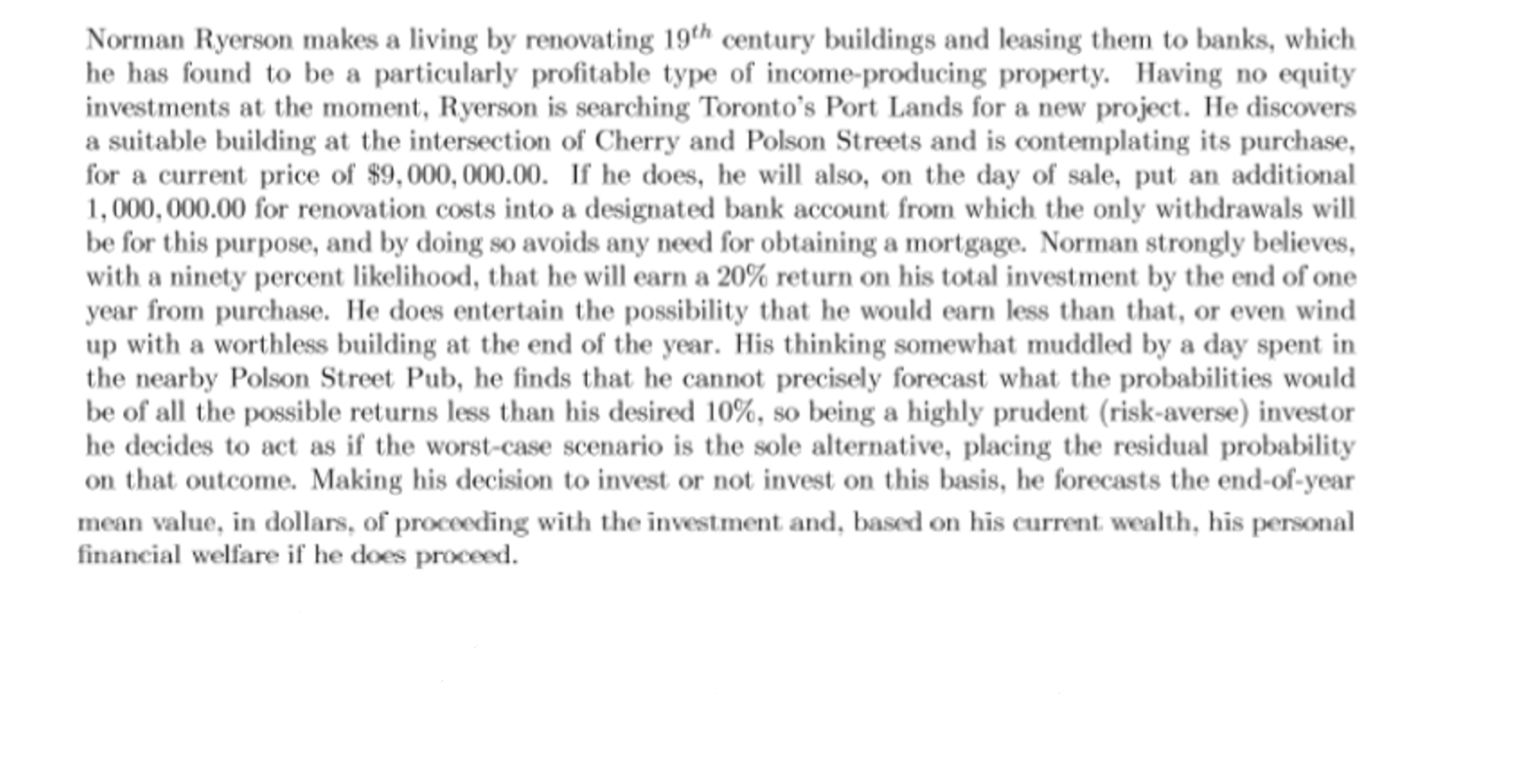Question
Norman takes a call from his appraiser and receives the news that, in the appraiser's expert opinion, the project would actually earn a one-year return
Norman takes a call from his appraiser and receives the news that, in the appraiser's expert opinion, the project would actually earn a one-year return of 22% but if the building turns out to be worthless at the end of the year, Norman would not only lose all of his equity, but, should this happen he would also need to pay the city a fee for the demolition of the building and environmental restoration of the site.
a) what fee would preserve Normans original expectation of a 20% return by the end of the year?
b) if the current value of that fee does preserve his expectation, would Norman's concern be justified?
c) for this same fee, would Norman change his requested fee of $10 800 000 to sell the project rights?
(PREVIOUS STORY)

Norman Ryerson makes a living by renovating 19th century buildings and leasing them to banks, which he has found to be a particularly profitable type of income-producing property. Having no equity investments at the moment, Ryerson is searching Toronto's Port Lands for a new project. He discovers a suitable building at the intersection of Cherry and Polson Streets and is contemplating its purchase, for a current price of $9,000,000.00. If he does, he will also, on the day of sale, put an additional 1,000,000.00 for renovation costs into a designated bank account from which the only withdrawals will be for this purpose, and by doing so avoids any need for obtaining a mortgage. Norman strongly believes, with a ninety percent likelihood, that he will earn a 20% return on his total investment by the end of one year from purchase. He does entertain the possibility that he would earn less than that, or even wind up with a worthless building at the end of the year. His thinking somewhat muddled by a day spent in the nearby Polson Street Pub, he finds that he cannot precisely forecast what the probabilities would be of all the possible returns less than his desired 10%, so being a highly prudent (risk-averse) investor he decides to act as if the worst-case scenario is the sole alternative, placing the residual probability on that outcome. Making his decision to invest or not invest on this basis, he forecasts the end-of-year mean value, in dollars, of proceeding with the investment and, based on his current wealth, his personal financial welfare if he does proceed.
Step by Step Solution
There are 3 Steps involved in it
Step: 1

Get Instant Access to Expert-Tailored Solutions
See step-by-step solutions with expert insights and AI powered tools for academic success
Step: 2

Step: 3

Ace Your Homework with AI
Get the answers you need in no time with our AI-driven, step-by-step assistance
Get Started


